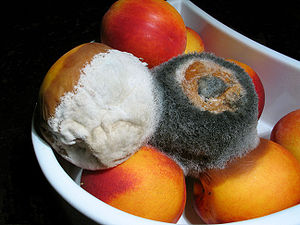 |
| (Photo credit: Wikipedia) |
It
seems like black mold is becoming an increasingly common problem for
our community these days, as are the health concerns it brings with
it. A recent study by the Mayo Clinic indicated that almost all
chronic sinus problems were as a result of exposure to black mold,
while the reported rate of asthma has increased threefold because of
mold.
There
are many species of mold found in the home, but the most concerning
is Black Mold, or to give it its scientific name : Stachybotrys
Chartarum. This is a very toxic species of mold and can be found
naturally both indoors and out. When outdoors, it is pretty harmless
and will thrive in moist soils, rotting wood and manure. However,
indoors it will grow almost anywhere that moisture has been absorbed,
particularly carpeting, drywall and flooring amongst others. As there
is not so much ventilation indoors the risks become more acute.
Commonly,
the health risks caused by black mold appear in the form of an
allergic reaction. Inhaling the spores cause hay fever like symptoms
which can be uncomfortable but are not too serious. However, in some
cases the reactions are much more serious resulting in Mold Induced
Asthma, Allergic Fungal Sinusitis, Bronchitis, Pneumonia and many
other respiratory conditions. In young children, the elderly and
those with existing conditions these are more serious and can be
fatal.
Why
take any chances? Call in a professional mold testing expert to check
out your property for the presence of black mold.






No comments:
Post a Comment